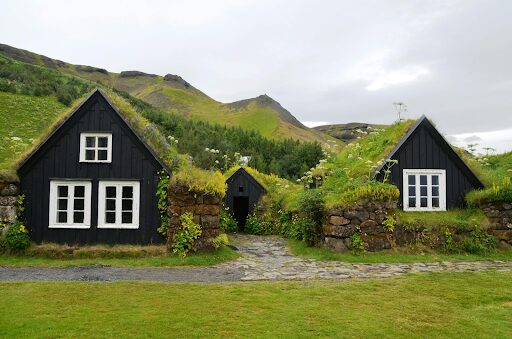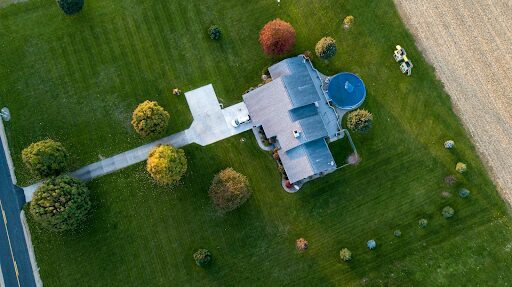Modern buildings are evolving. They’re not just designed to provide shelter or meet aesthetic preferences. Their roofs play a crucial role in managing energy, minimizing maintenance, and ensuring long-term performance. Smart roofing technologies have emerged as practical solutions that respond to environmental cues, reduce energy costs, and serve the unique demands of various structures. From heritage buildings to industrial complexes, the way roofs are constructed or restored must align with both current technology and the identity of the space.
Material Choice Matters More Than Ever
Material selection forms the foundation of a smart roofing system. It sets the tone for everything that follows—how the roof performs under stress, how it interacts with the environment, and how well it integrates with other smart technologies. For historical structures like churches, finding the balance between innovation and tradition is critical. Many roofing professionals recommend durable yet historically respectful materials such as synthetic slate or stone-coated metal when you need to restore your church roof without compromising architectural integrity or performance. For commercial and residential buildings, thermoplastic polyolefin (TPO), ethylene propylene diene terpolymer (EPDM), and modified bitumen are leading choices. Each of these offers a different benefit: TPO reflects UV rays, EPDM resists thermal cracking, and modified bitumen provides excellent waterproofing. Material selection must match the needs of the building, taking into account climate, structural capacity, and budget.
Energy Efficiency Through Reflective Technologies
Reflective roofing is not a futuristic concept—it’s happening now, and it’s measurable. Cool roofs, designed to reflect more sunlight and absorb less heat than standard options, significantly lower interior temperatures. This, in turn, reduces the workload on HVAC systems and cuts down on energy bills.
These systems often use coatings or membranes engineered with reflective pigments. In urban environments, reflective roofs help offset the heat island effect, lowering surrounding temperatures and supporting sustainability goals. White or light-colored TPO, PVC membranes, or coated metal roofs are common in areas with prolonged sun exposure.
Buildings that utilize reflective roofing can also maintain more stable internal temperatures. This stability improves the life span of mechanical systems and can provide an ideal environment for sensitive equipment or archival materials, relevant for libraries, hospitals, and museums.
Sensor-Integrated Roof Systems
Roofs are now part of the Internet of Things. Smart sensors embedded in modern roofing membranes or mounted to surface panels can track temperature, moisture levels, movement, and structural strain in real time. These data points are transmitted to facility managers or homeowners, allowing for immediate response to potential issues.
Leaks no longer require guesswork; moisture sensors pinpoint the exact location and alert the system before visible damage occurs. This kind of responsiveness can reduce repair costs and prolong roof life.
Buildings with large roof spans—like warehouses, schools, or arenas—benefit significantly from integrated monitoring. These systems reduce the need for manual inspections and minimize disruption during maintenance planning. In climates prone to freeze-thaw cycles or heavy rainfall, the real-time data becomes even more valuable.
Green Roofs Adapted for Function and Form

Green roofing, once considered a niche, has moved into mainstream use with new engineering advances. These systems combine vegetation, soil layers, and drainage structures to support plant life on rooftops. While their environmental benefits are well documented, the newer generations of green roofs are designed with advanced moisture control systems and root-resistant barriers that improve both performance and durability.
Municipal buildings, apartment complexes, and office spaces use green roofs to improve insulation and promote biodiversity. In dense cities, they add usable outdoor space for recreation or relaxation.
Smart irrigation systems can be integrated into green roofing, adjusting water flow based on weather patterns and soil conditions. These automated controls reduce water waste and keep rooftop ecosystems stable throughout the year. They also align with sustainability standards and can help buildings earn green certifications.
**Dynamic Roofing for Changing Climates**
One roof type doesn’t fit all climates. That’s where dynamic roofing solutions come in—systems designed to adapt to weather conditions. Phase change materials (PCMs), for example, can absorb or release heat depending on the ambient temperature. This helps regulate the indoor climate without consuming electricity.
In regions with extreme temperature fluctuations, these roofs offer a passive way to maintain interior comfort. PCM-infused panels are often embedded into the insulation layer or incorporated into lightweight concrete used in sloped designs.
Another advancement is shape-memory alloys used in movable roof panels. These allow roofs to open, close, or shift angles in response to sunlight or wind load. Although still emerging in commercial markets, these materials have already seen application in structures like sports stadiums and auditoriums.
Smart roofing isn’t defined by any one product or feature. It’s a concept driven by purpose: durability, adaptability, efficiency, and respect for a building’s role and structure. As the needs of buildings grow more complex, roofing systems must rise to meet them with precision, intelligence, and foresight.





























